Is it worth planting a Betta tomato on your plot? Characteristics and photos of the variety, nuances of cultivation
The hybrid variety Betta is another representative of stocky trunks. Refers to the earliest and most productive varieties. The creators of the hybrid are Polish breeders. Thanks to the successful crossing of varieties, 5-6 juicy and sweet tomatoes ripen on each bunch. They are very easy to care for, so they are ideal for beginner gardeners.
Due to the high content of lycopene, the fruits have a rich red hue and are excellent for dietary nutrition. Antioxidants reduce the risk of developing some forms of other cancers, cardiovascular diseases, improve metabolism and appetite, slow down the aging process, and help produce melanin in the skin, which fights the effects of UV rays.
Description
Betta tomatoes are an ultra-early hybrid variety of tomatoes. for growing in open ground, less often in a greenhouse. A standard low-growing plant up to 50 cm high with a powerful stem device. Refers to potted crops that bear fruit well on balconies or window sills and ripen together.
Distinctive features
The dwarf variety is suitable for cultivation on a windowsill or balcony, in open ground. A completely unpretentious, moderately leafy type, suitable for lazy gardeners who rarely visit the garden.
Fruit characteristics, yield
The pulp is juicy, low in seeds, medium-sized tomatoes up to 60 g, individual fruits up to 100 g.The shape is flat-round, the skin is smooth, does not crack, bright red in color, and quite elastic. The taste and aroma are rich, sugar content and acidity are balanced. Productivity up to 2 kg from each bush.
Photo
In the photo below you can see what the vegetable looks like:
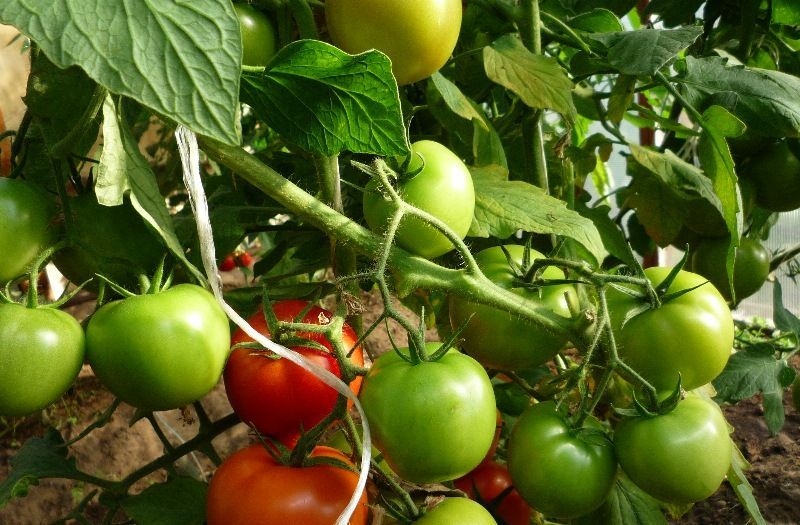
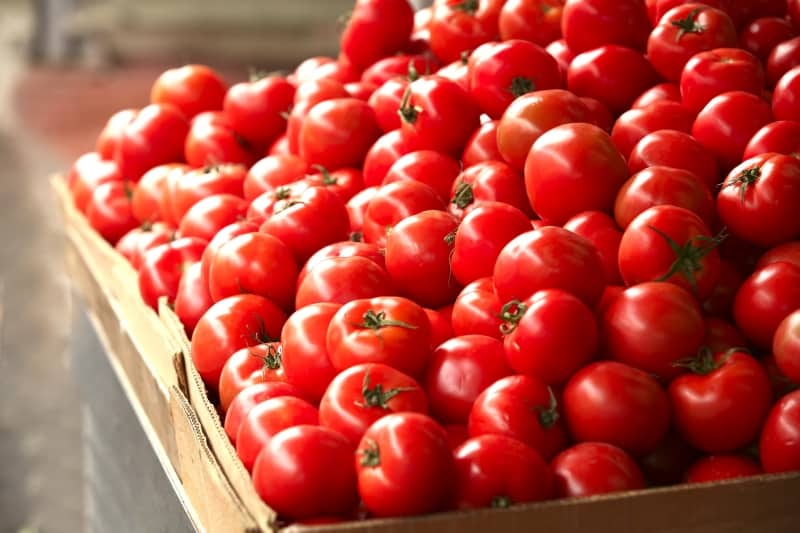
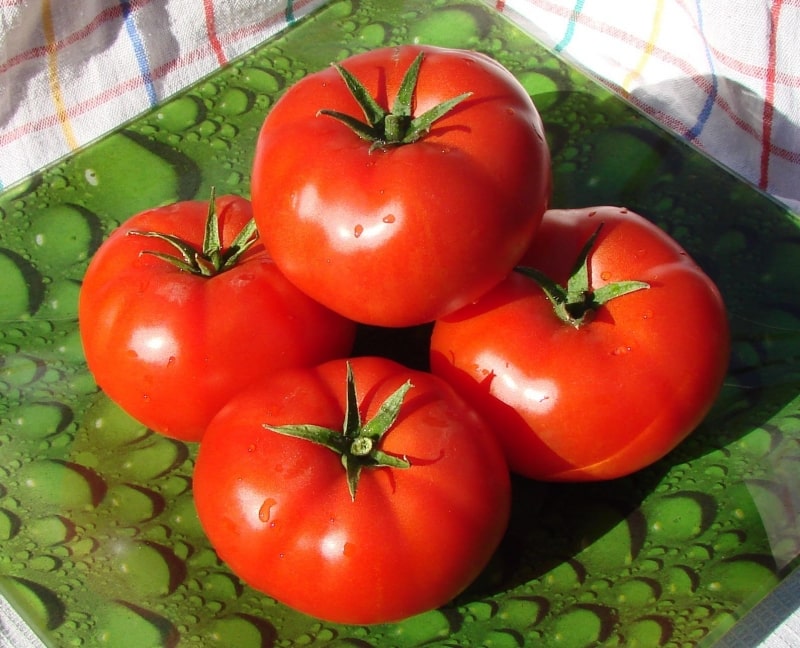

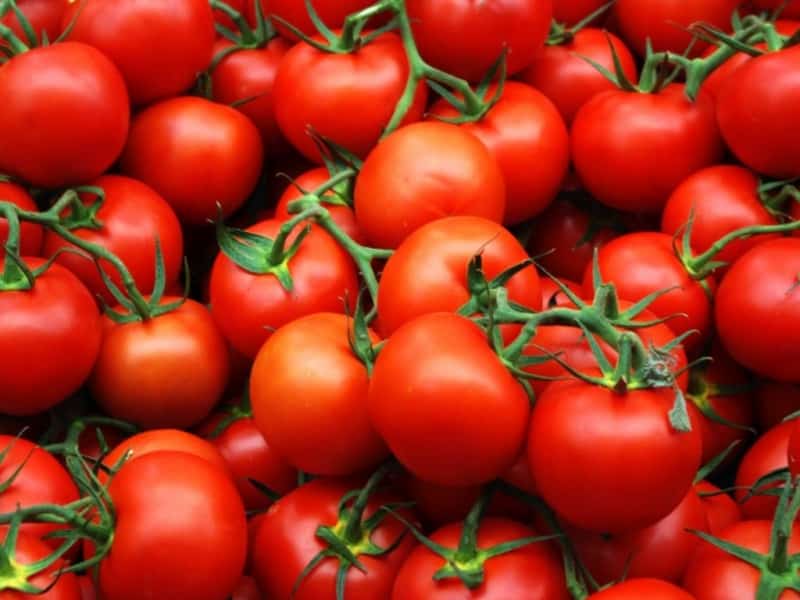
How to get seedlings?
Growing on a windowsill requires a supply of all necessary materials such as:
- high-quality seeds with an unexpired shelf life;
- pre-prepared soil mixture;
- complex fertilizers;
- growth stabilizers;
- small and larger containers;
- sprayer for processing seedlings;
- manganese and other antiseptics.
Seeds are sown in the first ten days of April, and seedlings are transferred to the beds 1 month after germination. As a rule, shoots appear within a week.
Seed preparation
Seed preparation includes standard procedures such as antiseptic treatment with potassium permanganate (1%) or another solution.
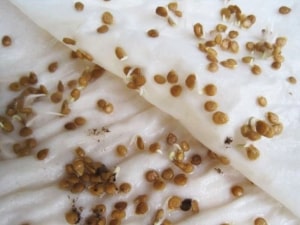
- To prepare a manganese solution you will need 200 ml of water and 2 g of pharmaceutical manganese in crystals.
- Next, the seeds are generously washed with clean water and allowed to rest and dry for half an hour.
- A hormonal-based growth stimulator will help speed up the process of crop ripening by another 4-5 days. It happens that manufacturers themselves treat them with stimulants, then the seeds have bright colors and do not need additional nutrition.
- After all this, they are thoroughly dried again and put away completely (for a day) in a container with warm, non-chlorinated water until they swell.
Important! To prevent the seeds from floating and drying out, they are also covered with a cloth or wrapped in a gauze bag. On the second day you can already plant, although some wait another day or two until the sprouts appear.
Container and soil
Betta tomatoes love loose and fertile soil. The soil should be heavy and loamy. Wood ash, mineral fertilizers, 1/2 part of sand per 10 kg of soil are added in advance and, if desired, non-acidic peat (ph 6.5) can be added.
 The plants are not picky about the composition of the soil; the seedlings easily adapt and do not require special care. The container can be shared or individual for each seed (a glass up to 100 ml), shallow, up to 15 cm high.
The plants are not picky about the composition of the soil; the seedlings easily adapt and do not require special care. The container can be shared or individual for each seed (a glass up to 100 ml), shallow, up to 15 cm high.
After two weeks, the first true leaves appear, which means it’s time to pluck and transplant the seedlings into larger containers. At the same time, they can be additionally fed with complex fertilizer.
Sowing
- There is no need to deepen the seeds (1 cm is enough), but make sure that they do not come to the surface during the process. To do this, the soil above the seed is quietly compacted.
- The distance between the seeds is 2 cm.
- The container is covered with polyethylene and left at a temperature of 20-25 C for several (up to 5) days. The main thing is to ensure that the seeds do not ferment, pay close attention to the humidity.
What kind of care is needed?
Water with moderately purified and warm water, There must be drain holes at the bottom to allow excess moisture to drain away and air to circulate well. The seedlings are strong and almost always take root well.
 After the shoots emerge, the film is removed, the temperature is lowered to 16 C. And after a week, the Betta hybrid will also have to be illuminated for 16 hours in March and April. It is recommended to carry out hardening two weeks in advance, although it is not necessary for the Betta variety. To do this, the seedlings are taken out into the open air, first for a couple of hours, then more, and finally they can be left overnight.
After the shoots emerge, the film is removed, the temperature is lowered to 16 C. And after a week, the Betta hybrid will also have to be illuminated for 16 hours in March and April. It is recommended to carry out hardening two weeks in advance, although it is not necessary for the Betta variety. To do this, the seedlings are taken out into the open air, first for a couple of hours, then more, and finally they can be left overnight.
How to grow tomatoes?
In late May - early June, seedlings are transferred to the ground. At this point, the tomatoes are about a month old from the moment the seeds germinate. The main condition is that the soil must be warmed up during the day and at night to at least 15 C. The best time for replanting is early morning or evening, the weather is better damp. Choose the sunniest place on the site.
Landing
Planting of seedlings occurs at the beginning of May, when the age of the plant reaches 30-35 days. In open ground, a bush density of 50x30 cm is allowed.
- They are not planted very deep because the roots are quite short.
- Ash and complex fertilizers are added to the holes as an antiseptic.
- Water generously with warm, settled water.
- The roots and soil also need to be squeezed thoroughly with your hands.
Care
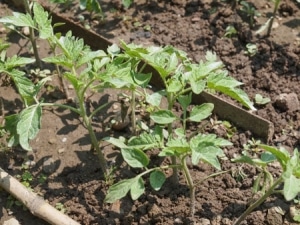 Always water at the root, so as not to provoke flying of inflorescences and disease. In dry weather, the amount and frequency of watering is increased; in wet weather, on the contrary, during flowering it is also reduced.
Always water at the root, so as not to provoke flying of inflorescences and disease. In dry weather, the amount and frequency of watering is increased; in wet weather, on the contrary, during flowering it is also reduced.
Thanks to the low and strong trunk, they do not require staking or pinching. Lack of water affects the leaves as they fall and turn yellow. Excess, on the contrary, promotes fungal diseases and rotting of the root system.
In general, care is the simplest:
- watering once every 5-7 days;
- fertilizer 3 times per season;
- loosening;
- manual weeding.
Mulching also promotes better moisture and ventilation of the root system. It is recommended to mulch with organic matter (dry grass, shavings, husks, sawdust, straw) or inorganic materials (perforated bag). A protective layer of mulch fights pests and weeds, prevents overheating and compaction.
Due to the high density of beds, the Betta variety is less prone to weed growth.Weeding is always carried out in the early stages of weed development, so as not to accidentally damage the crop itself. The best prevention is the right choice of mulch, which will prevent weeds from pollinating. Proper compost, which should not contain freshly picked weeds, also helps.
It responds well to additional fertilization. For example, you can take 30 g of superphosphate or potassium salt per bucket of water and water it 10-12 days after planting in the ground. To stimulate the ovaries, spray boric acid (10 g) onto a bucket of water.
Features of cultivation and possible difficulties
 Tomato agricultural technology does not cause any particular problems, but you can make the growing process more comfortable and easier.
Tomato agricultural technology does not cause any particular problems, but you can make the growing process more comfortable and easier.
- The method of direct sowing of seeds is more suitable for the southern regions.
- It is not recommended to place it together with other varieties of tomatoes, as this can lead to cross-pollination and possibly reduce yield.
- To protect young plants from cold and wind, temporary shelters are additionally installed.
Diseases and pests
It has genetic immunity to a number of nightshade infections. Extremely rare, but still possible cases of the disease:
- top rot;
- TMV (tobacco mosaic virus);
- Alternaria (dry spotting).
The main threat is the attack of tomato beds by parasites, such as:
- Colorado potato beetles;
- spider mite;
- thrips.
Preventive measures will help avoid their occurrence:
- weeding;
- hilling;
- manual collection of larvae;
- treatment with safe insecticides.
Nuances for open ground and greenhouses
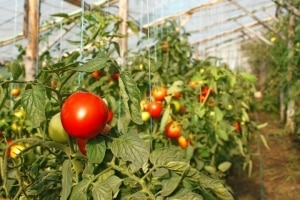
Betta tomatoes, as a rule, are not grown in a greenhouse. It is more cost-effective to grow in pots on a balcony or windowsill.
It can be planted in open ground in the southern regions by direct sowing of seeds in the first ten days of May. And already in June, the seedlings are picked and moved to the ridges.
No pinching is required at all.
The density of the bed is up to 6 bushes per 1 square. m, many prefer to arrange them in a checkerboard pattern.
Harvesting and application
Average, 85 days pass from the emergence of seedlings to the ripening of fruits. The yield is very good - up to 10 kg/sq. m.
The variety is universal, consumed both fresh and processed. The taste is sweet with moderate sourness.
Excellent for whole-fruit canning and salads; its taste makes it possible to squeeze juices and add to sauces. No less popular as a salad variety. Retains its presentation for a long time, including when transporting over long distances.
Advantages and disadvantages
 Betta tomatoes have a number of advantages due to which they are able to bear fruit so early.
Betta tomatoes have a number of advantages due to which they are able to bear fruit so early.
- Almost no full-fledged stepchildren grow up.
- Roots and stems are compact.
- They absorb moisture well from the soil surface; accordingly, all nutrients are used for accelerated formation of ovaries and ripening of fruits.
- Resistant to temperature and humidity changes.
- They are not afraid of late blight due to their super early maturity.
- High yields are achieved through dense planting in a small area.
Farmer reviews
This crop is loved by many summer residents. Although the fruits cannot boast of a large mass, thanks to the dense planting of small bushes in the beds, the yield is much higher than many early varieties and is close to high.
Combined with excellent nutritional qualities, unpretentiousness and good presentation, the Betta variety has become a godsend for many farmers.
Igor, 49 years old, Ufa: “Last year I planted seeds of Betta hybrid tomatoes for the first time. The package contained about 30 pieces, treated with a special growth stimulator. Contained substances with disinfecting properties accelerate seed germination by several days.
The plants grew large, more than half a meter high - almost 60 cm, with a stocky stem and a dense arrangement of inflorescences. The tomatoes ripen together and are not large in size. I really liked the homemade canned food from this variety.”
Conclusion
Thanks to their unpretentiousness to growing conditions, Betta tomatoes can be easily cultivated even by inexperienced gardeners. Small bushes will not produce a fabulously large harvest, but they will allow you to enjoy small, tasty tomatoes at a very early date. The variety's resistance to the main diseases of the Solanaceae family deserves special attention.